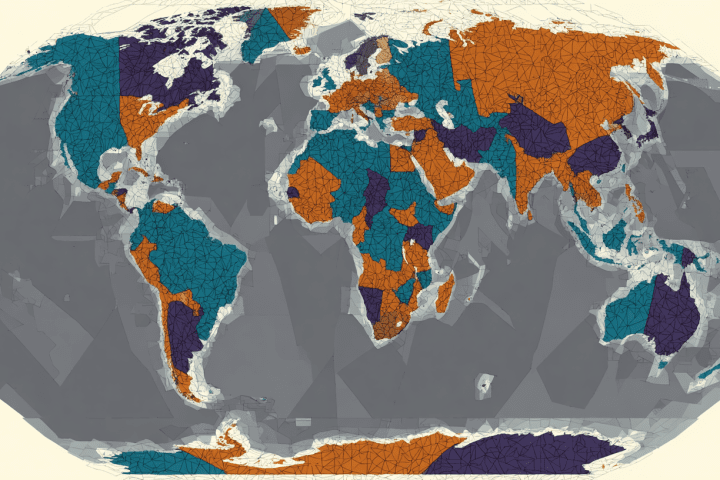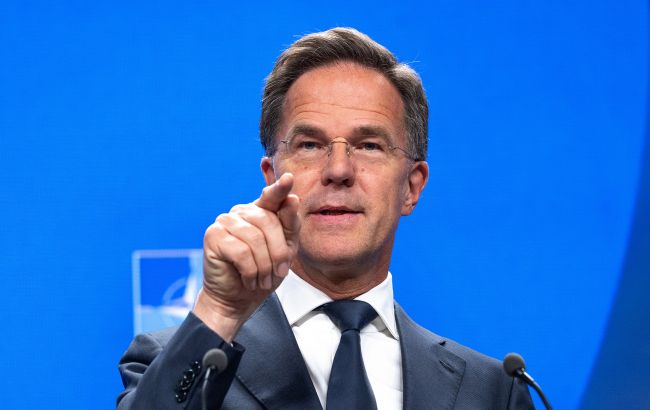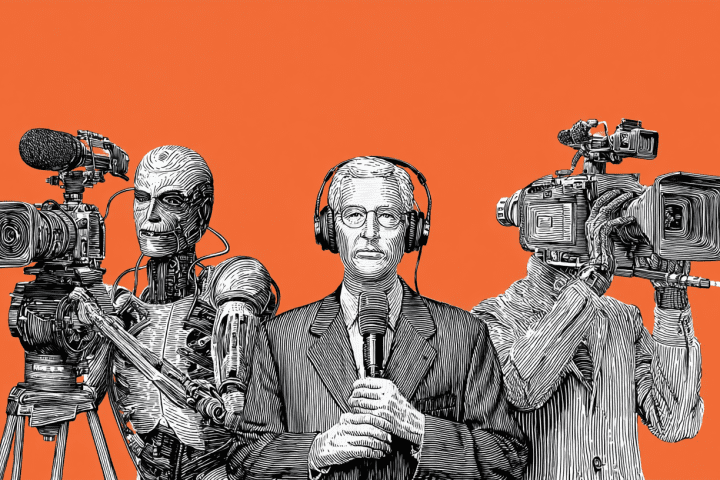Social movements have been the driving force behind some of humanity’s most significant transformations, reshaping societies, challenging power structures, and advancing justice across generations. From the civil rights movement to climate activism, these collective efforts demonstrate the power of organized citizens to create lasting change. Understanding the dynamics of social movements and their transformative potential is essential for comprehending how societies evolve and adapt to new challenges in our interconnected world.
The Anatomy of Social Movements
Social movements represent joint efforts by citizens, groups, and communities bound by similar goals who organize themselves to overcome challenges, tackle social issues, or resist domination. These movements are more than isolated protests or demonstrations—they represent sustained efforts to create systemic change through collective action, strategic organizing, and persistent advocacy.
The underlying causes of social movements often stem from grievances linked to inequalities, injustice, and power differentials. When traditional institutional channels fail to address these concerns, citizens organize to challenge existing systems and social rules. The mobilization process typically begins with small groups of committed individuals who share common concerns and gradually expands through social networks and shared experiences.
Social networks serve as the architecture upon which movements are built. Action emerges in interconnected groups where people share similar characteristics, activities, and worldviews. The spread of information and engagement occurs when these clusters connect through bridges to other communities and social groups. This network effect enables organized movements to drive mass mobilization and grow stronger through what researchers call the “spill-over effect.”
Communication lies at the core of movement development and expansion. Modern social movements leverage traditional media, social media platforms, and grassroots organizing to amplify their messages and coordinate action. The ability to rapidly disseminate information and coordinate responses has transformed how contemporary movements organize and sustain momentum.
Key Components of Effective Movements
Successful social movements typically share several common elements that enable them to achieve their objectives:
- Clear vision and goals: Effective movements articulate specific, achievable objectives that resonate with broader audiences and provide clear direction for action
- Strong leadership: While movements may emerge spontaneously, sustained success requires dedicated leaders who can coordinate activities, manage resources, and maintain momentum
- Strategic planning: Successful movements employ diverse tactics and strategies, from direct action and protests to lobbying, litigation, and media campaigns
- Resource mobilization: Access to financial, human, and organizational resources enables movements to sustain long-term campaigns and expand their reach
- Coalition building: The ability to build alliances across different groups and interests multiplies movement power and creates broader support bases
Historical Transformations Through Social Action
Throughout history, social movements have achieved remarkable transformations that seemed impossible at their inception. These historical examples demonstrate the potential for organized citizen action to reshape social, political, and economic systems.
The women’s suffrage movement exemplifies how persistent organizing can overcome entrenched opposition to achieve fundamental rights. Leaders like Emmeline Pankhurst in Britain organized demonstrations, hunger strikes, and civil disobedience to demand women’s voting rights. Despite arrests, imprisonment, and violent opposition, the movement ultimately succeeded through sustained pressure and strategic advocacy.
The civil rights movement in the United States transformed American society through a combination of legal challenges, mass protests, and moral leadership. Figures like Martin Luther King Jr. advocated for nonviolent resistance, grassroots organizing, and civil disobedience to challenge racial segregation and discrimination. The movement’s success in achieving landmark legislation like the Civil Rights Act and Voting Rights Act demonstrates how strategic nonviolent action can overcome systematic oppression.
The anti-apartheid movement in South Africa shows how international solidarity can support domestic resistance efforts. Nelson Mandela’s leadership, combined with international sanctions and sustained domestic opposition, ultimately dismantled the apartheid system and established democratic governance. The movement’s success required decades of sacrifice and commitment from activists who faced imprisonment, violence, and exile.
Modern Movement Innovations
Contemporary social movements have developed new strategies and tactics that leverage technology and globalization:
- Hashtag activism and viral campaigns: Social media platforms enable rapid mobilization and awareness-raising through viral content and coordinated online actions.
- Transnational organizing: Global communication networks allow local movements to connect with international allies and coordinate cross-border campaigns.
- Data-driven organizing: Modern movements use sophisticated data analysis to target messaging, identify supporters, and measure campaign effectiveness.
- Multi-platform strategies: Successful movements integrate online and offline activities, combining digital organizing with traditional grassroots mobilization.
- Rapid response capabilities: Digital communication enables movements to quickly respond to developments and coordinate immediate action across geographic boundaries.
Contemporary Movements and Global Impact
Today’s social movements address increasingly global challenges that require coordinated responses across national boundaries. Climate change, economic inequality, and human rights issues transcend local or national concerns, necessitating movement strategies that operate at multiple levels simultaneously.
The climate movement exemplifies contemporary global organizing, with activists like Greta Thunberg inspiring worldwide youth activism. The movement combines scientific advocacy, direct action, and policy lobbying to address climate change. Local groups organize around specific projects while participating in global campaigns that pressure governments and corporations to reduce emissions and transition to renewable energy.
The Black Lives Matter movement demonstrates how local grievances can inspire global solidarity and action. What began as responses to specific incidents of police violence in the United States evolved into an international movement addressing systemic racism and police brutality. The movement’s decentralized structure allows local chapters to address specific community concerns while maintaining connection to broader goals.
The #MeToo movement shows how social media can amplify previously marginalized voices and create accountability for powerful institutions. The movement’s viral spread enabled survivors to share experiences, created solidarity across geographic and cultural boundaries, and pressured institutions to address sexual harassment and assault. This demonstrates how digital platforms can transform individual experiences into collective action.
Challenges in Contemporary Organizing
Modern social movements face unique challenges that require adaptive strategies:
- Information overload and attention competition: In an era of constant information, movements must compete for public attention and cut through noise to reach audiences
- Digital surveillance and repression: Governments and corporations have sophisticated tools for monitoring and disrupting movement activities, requiring new security practices
- Polarization and echo chambers: Social media algorithms can create isolated communities that limit movements’ ability to reach diverse audiences
- Resource inequality: Well-funded opposition groups can deploy sophisticated counter-messaging and lobbying efforts that challenge movement goals
- Scale and coordination challenges: Global issues require coordination across vastly different political, cultural, and economic contexts
The evolution of digital activism and social media organizing continues to reshape how movements form, communicate, and achieve their objectives in the modern era.
The Role of Youth and Marginalized Communities
Young people have consistently played central roles in driving social transformation, bringing energy, innovation, and moral clarity to movement organizing. Youth activism carries particular power because it represents future stakeholder interests and challenges established systems with fresh perspectives.
Youth climate activism has revitalized environmental movements worldwide by framing climate change as an intergenerational justice issue. Young activists argue that they will bear the consequences of current policy failures, giving them unique moral authority to demand action. School strikes, youth-led organizations, and direct action campaigns have succeeded in raising public awareness and pressuring governments to declare climate emergencies.
Marginalized communities often serve as catalysts for broader social change because they experience systemic inequalities most acutely. Their organizing efforts highlight contradictions between stated values and actual practices, creating moral pressure for reform. The civil rights movement, women’s liberation, LGBTQ+ rights, and disability rights movements all emerged from communities that faced discrimination and exclusion.
The intersection of youth energy and marginalized community experiences creates particularly powerful movements. Young people from affected communities bring both lived experience of injustice and the idealism necessary to envision alternatives. Their organizing often challenges established civil rights organizations to adopt more radical positions and embrace new strategies.
Building Inclusive Movement Coalitions
Effective contemporary movements must navigate diverse constituencies while maintaining focus on core objectives:
- Intersectional analysis: Understanding how different forms of oppression interact helps movements build broader coalitions and avoid excluding potential allies
- Cultural competency: Movements operating across diverse communities must adapt messaging and strategies to resonate with different cultural contexts
- Leadership development: Investing in leadership development for marginalized community members ensures authentic representation and sustainable organizing
- Resource sharing: Established organizations should share resources and platforms with emerging grassroots groups to expand movement capacity
- Conflict resolution: Internal disagreements are inevitable in diverse coalitions, requiring processes for addressing conflicts while maintaining unity
Digital Transformation and Movement Strategy
Digital technologies have fundamentally altered how social movements organize, communicate, and sustain themselves. While technology creates new opportunities for organizing, it also presents challenges that movements must navigate carefully.
Social media platforms enable rapid mobilization and viral content creation that can quickly raise awareness about issues and coordinate action. Hashtags like #BlackLivesMatter, #MeToo, and #ClimateStrike have become rallying points for global movements. The speed and reach of digital communication can transform local incidents into international campaigns within hours.
However, digital organizing also presents limitations and risks. Algorithm-driven platforms can create echo chambers that limit movements’ ability to reach diverse audiences. Government and corporate surveillance capabilities pose security risks for activists. The ephemeral nature of social media attention can make it difficult to sustain long-term campaigns that require persistent effort.
Successful contemporary movements typically combine digital tools with traditional organizing methods. Online platforms facilitate communication, coordination, and awareness-raising, while face-to-face organizing builds relationships, develops leadership, and creates accountability. The most effective movements use technology strategically rather than allowing it to substitute for fundamental organizing principles.
Data and Movement Analytics
Modern movements increasingly use data analysis to improve their effectiveness:
- Audience targeting: Data analysis helps movements identify potential supporters and tailor messaging to different demographic groups
- Campaign testing: A/B testing and similar methods allow movements to optimize messaging and tactics based on empirical results
- Impact measurement: Data collection enables movements to track progress toward goals and adjust strategies based on evidence
- Opposition research: Understanding opponent strategies and resources helps movements develop counter-strategies
- Network analysis: Mapping social networks helps movements identify key influencers and optimal pathways for information spread
Economic and Political Transformation
Social movements have achieved significant transformations in economic and political systems, often by challenging fundamental assumptions about power distribution and resource allocation. These changes typically require sustained effort over many years and careful attention to implementation processes.
Labor movements have secured fundamental workplace protections, wage standards, and organizing rights that benefit workers across industries. The eight-hour workday, workplace safety regulations, collective bargaining rights, and social insurance programs all emerged from labor organizing efforts. Contemporary labor movements address new challenges including gig economy labor rights, automation impacts, and global supply chain working conditions.
Economic justice movements challenge wealth concentration and advocate for policies that reduce inequality. These movements have achieved minimum wage increases, progressive taxation, financial transaction taxes, and corporate accountability measures. The Occupy Wall Street movement, while short-lived, succeeded in shifting public discourse about inequality and corporate power.
Political reform movements have expanded democratic participation and improved government accountability. Voting rights campaigns, campaign finance reform efforts, and government transparency initiatives have made political systems more responsive to citizen concerns. Contemporary movements address gerrymandering, voter suppression, money in politics, and democratic institutions’ integrity.
Institutional Change and Policy Implementation
Achieving policy victories represents only the beginning of transformation processes. Movements must also ensure effective implementation and defend gains against backlash:
- Policy advocacy: Working with sympathetic policymakers to draft and pass legislation that reflects movement goals requires ongoing engagement with political processes.
- Implementation monitoring: Ensuring that new policies are effectively implemented often requires continued organizing and advocacy pressure on government agencies.
- Backlash resistance: Successful movements typically face counter-mobilization from opponents who seek to reverse or undermine achievements.
- Institution building: Creating or reforming institutions that can sustain change beyond individual campaigns requires long-term strategic thinking and resource investment.
- Cultural change: Policy changes must be accompanied by cultural shifts that normalize new practices and values in society.
The intersection of social movements and political transformation processes demonstrates how grassroots organizing can create lasting institutional change when properly executed.
Challenges and Limitations of Movement Politics
While social movements have achieved remarkable transformations, they also face significant limitations and challenges that can prevent them from achieving their goals or sustaining their gains over time.
Internal contradictions and conflicts can weaken movements when different constituencies have divergent priorities or strategies. Large coalitions may struggle to maintain unity when faced with difficult tactical decisions or resource allocation choices. Leadership conflicts, ideological disagreements, and cultural differences can fragment movements and dissipate their energy.
External opposition from powerful interests can overwhelm movement resources and undermine organizing efforts. Wealthy corporations, government agencies, and established institutions have sophisticated tools for opposing movement goals through lobbying, litigation, media campaigns, and sometimes direct repression. Movements must carefully assess power imbalances and develop strategies that account for opponent capabilities.
The challenge of sustaining momentum over the extended periods required for significant change tests movement resilience. Media attention, public interest, and activist energy typically fluctuate over time. Movements must develop strategies for maintaining engagement during periods of reduced visibility and activity.
Unintended Consequences and Backlash
Social movements can sometimes produce unintended consequences that complicate their objectives:
- Polarization effects: Movement activities can sometimes strengthen opposition by creating identity-based conflicts that harden positions rather than building consensus
- Co-optation risks: Successful movements may see their messages or leaders absorbed by existing institutions in ways that dilute transformative potential
- Resource diversion: Movement activities can sometimes divert attention and resources from other important social needs or alternative strategies
- Repression triggers: Movement success can provoke government or private repression that creates new obstacles and dangers for activists
- Elite adaptation: Powerful interests may adapt to movement pressure through symbolic changes that preserve fundamental inequities
Future Directions and Emerging Trends
Social movements continue evolving as they respond to new challenges and opportunities created by technological, social, and political changes. Understanding these trends helps predict how future movements might develop and what strategies they might employ.
Artificial intelligence and automation are creating new organizing challenges and opportunities. Workers face displacement from technological change, requiring movements that address economic transition and retraining needs. Simultaneously, AI tools can enhance movement organizing through improved targeting, communication, and coordination capabilities.
Global interconnection continues increasing, making local issues part of global systems. Climate change, migration, economic inequality, and health challenges require coordinated responses across national boundaries. Future movements will likely be more transnational and focus on global governance institutions.
Demographic changes, particularly aging populations in developed countries and youth bulges in developing regions, will reshape movement priorities and strategies. Intergenerational equity issues will become more prominent as different age groups face divergent challenges and opportunities.
The ongoing erosion of traditional institutions—political parties, religious organizations, labor unions—creates space for movements to fill representation gaps while also reducing institutional channels for achieving change. Future movements may need to balance anti-institutional organizing with institution-building efforts.
Conclusion
Social movements remain among the most powerful forces for transformation in human societies. Their ability to mobilize collective action, challenge existing power structures, and create new possibilities for human flourishing continues to drive social progress across diverse contexts and issues.
The effectiveness of contemporary movements depends on their ability to integrate traditional organizing principles with new technologies and strategies. Successful movements combine clear vision with flexible tactics, strong leadership with inclusive participation, and local relevance with global awareness.
Understanding social movements and their transformative potential is essential for anyone seeking to create positive change in their communities or contribute to broader social progress. The lessons learned from historical movements provide guidance for contemporary organizing while highlighting the need for adaptive strategies that respond to changing conditions.
As societies face increasingly complex challenges that require collective responses, social movements will continue playing crucial roles in identifying problems, mobilizing resources, and implementing solutions. The future of social movements and their role in democratic transformation will depend on their ability to navigate technological change, global interconnection, and evolving social needs while maintaining their core commitment to justice and human dignity.
The transformation of society through organized citizen action represents one of humanity’s most hopeful capabilities. By understanding how movements succeed and fail, we can better support efforts to create more just, sustainable, and equitable communities for all.












